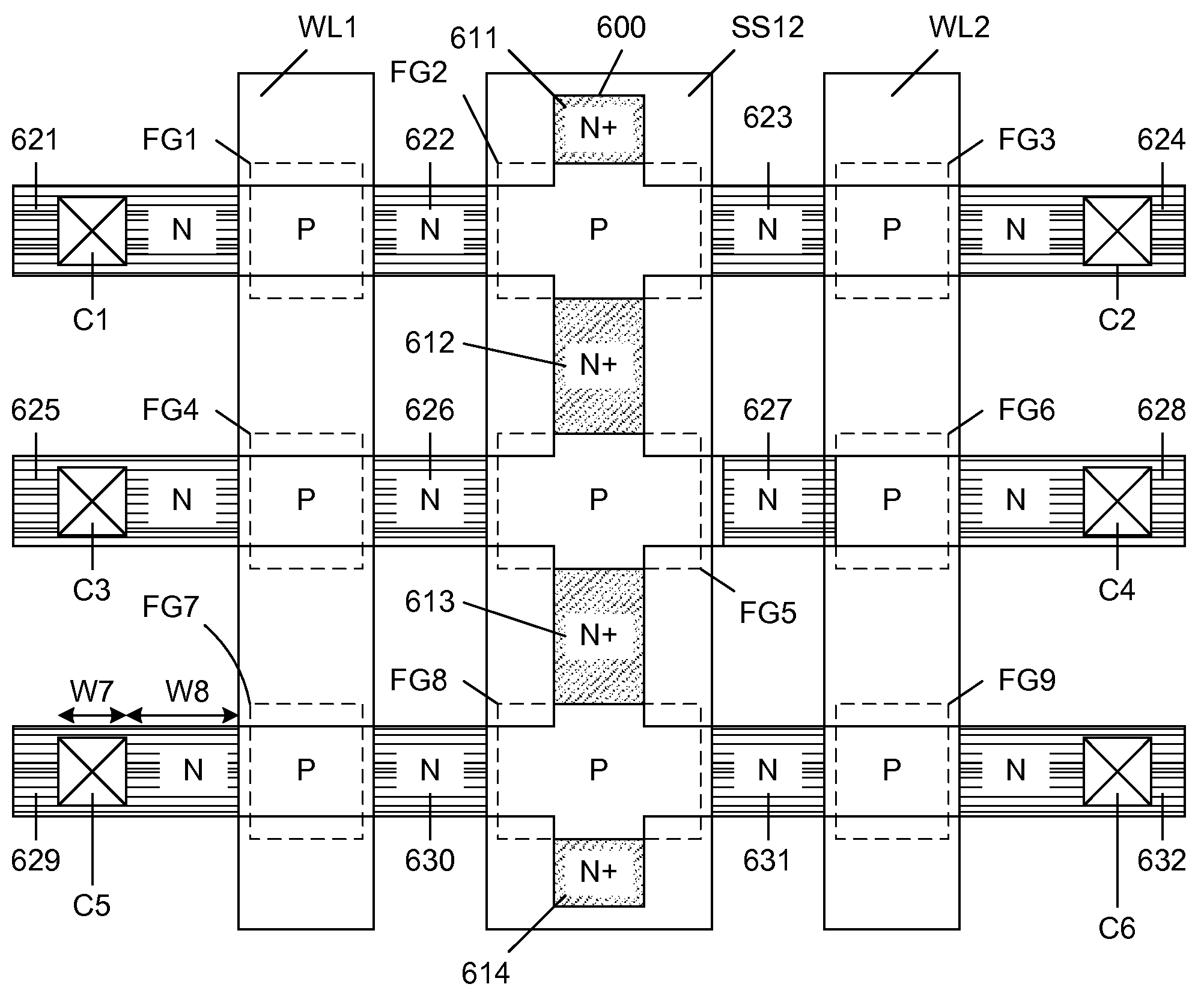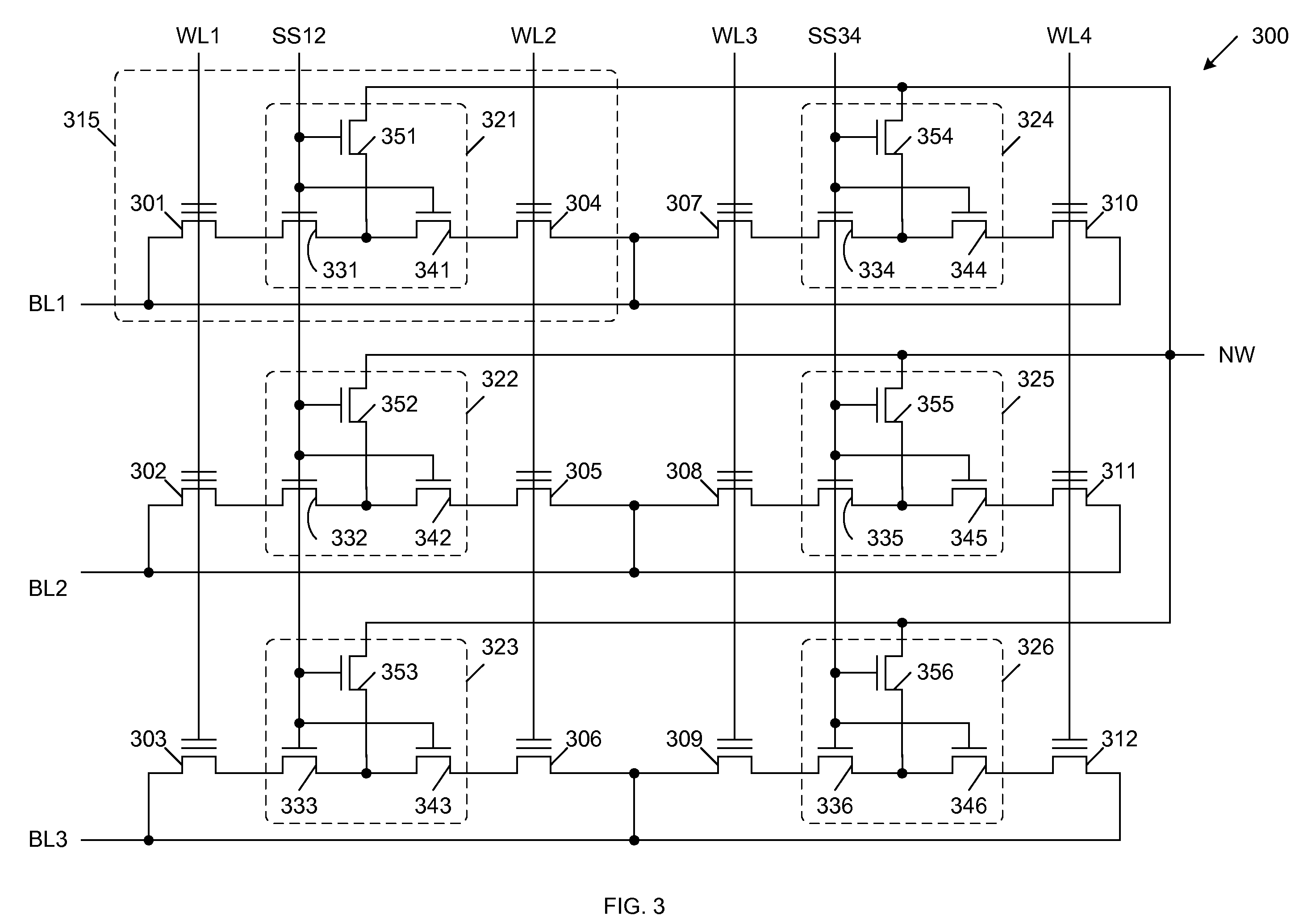Scalable electrically eraseable and programmable memory
a programmable memory and programmable memory technology, applied in the field of electrically eraseable and programmable memory (eeprom) cells, can solve the problems of difficult yield management, complicated memory operation, and complex process necessary to fabricate eeprom memories
- Summary
- Abstract
- Description
- Claims
- Application Information
AI Technical Summary
Benefits of technology
Problems solved by technology
Method used
Image
Examples
Embodiment Construction
[0019]FIG. 3 is a circuit diagram of an array 300 of EEPROM cells in accordance with one embodiment of the present invention. EEPROM cell array 300 includes floating gate non-volatile memory transistors 301-312, source access transistors 321-326, word lines WL1-WL4, bit lines BL1-BL3, source select lines SS12 and SS34 and N-well connection NW. Source access transistors 321-326 include transistor structures 331-336, respectively, transistor structures 341-346, respectively, and transistor structures 351-356, respectively. As described in more detail below, each of source access transistors 321-326 implements the functionality of three transistor structures using a single transistor.
[0020]Memory transistors 301-312 and source access transistors 321-326 are fabricated in a well region having a first conductivity type, which in turn, is located in a well region having a second conductivity type, opposite the first conductivity type. In the described embodiments, memory transistors 301-3...
PUM
 Login to View More
Login to View More Abstract
Description
Claims
Application Information
 Login to View More
Login to View More - R&D
- Intellectual Property
- Life Sciences
- Materials
- Tech Scout
- Unparalleled Data Quality
- Higher Quality Content
- 60% Fewer Hallucinations
Browse by: Latest US Patents, China's latest patents, Technical Efficacy Thesaurus, Application Domain, Technology Topic, Popular Technical Reports.
© 2025 PatSnap. All rights reserved.Legal|Privacy policy|Modern Slavery Act Transparency Statement|Sitemap|About US| Contact US: help@patsnap.com



